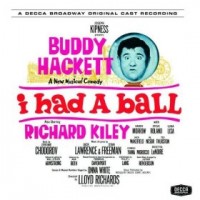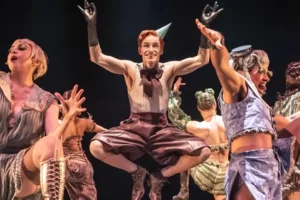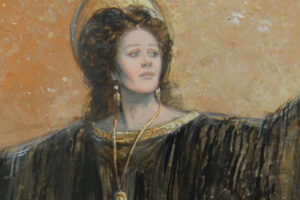

I normally don’t drink liquor, but my duty as a reporter obliged me not to refuse a special cocktail that mixologist Allen Katz has concocted especially for this occasion. This concoction, appropriately named The “Castratini,” is made with vodka, champagne, lime and a secret ingredient my untrained taste buds were unable to detect.
Before the screening of the film, there was a raffle with five prizes which included (in order of importance) a copy of the CD Sacrificium, a t-shirt with Farinelli printed on, the same CD with the same T-shirt, three DVDs of Ms. Bartoli’s past efforts and the magazine Listen, and the biggest prize of all, 12 different CDs of the mezzo-soprano. They called the four numbers around my own number, but I left empty-handed.
The diva was not in the room, though she announced her new project through a recorded video message.
The film essentially presents Ms. Bartoli performing lip-synched selections from Sacrificium, her recent CD entirely devoted to music written for castratos. It is not my intention to talk about the CD, as it has already been masterfully reviewed on this site. My purpose is to write briefly about the visual part of the DVD, which was filmed in one of the most spectacular sites in the world: the Reggia of Caserta (near Naples), also known as “the little Versailles.”
Considering the material of the DVD, a better location could not be found. Most of the hour-long film takes places on the stage of the Royal Palace, though a few parts are set on the grandiose marble staircase and also in some of the rooms. Ms. Bartoli wears elaborate Baroque stage costumes, not dissimilar to those seen in the movie Farinelli: a triumph of feathers and golden capes. Since she is lip-synching (very artfully, to tell the truth), she refrains from making those facial gestures that are her trademark when she performs live, but which can be rather creepy.
Alternating between fast and slow arias, the film ends with the most famous piece of the recording, “Ombra mai fu,” fittingly filmed in the leafy woods surrounding the palace.
Though it was my intention to take just a couple of sips of “The Castratini,” I ended up guzzling it all, leaving Le Poisson Rouge slightly dizzy, not just because of the alcohol, but especially due to the vertigo-inducing coloratura of La Bartoli!
-
Topics: 192, bartoli, ercole farnese, review, the castratini
parterre in your box?
Get our free weekly newsletter delivered to your email.























Comments